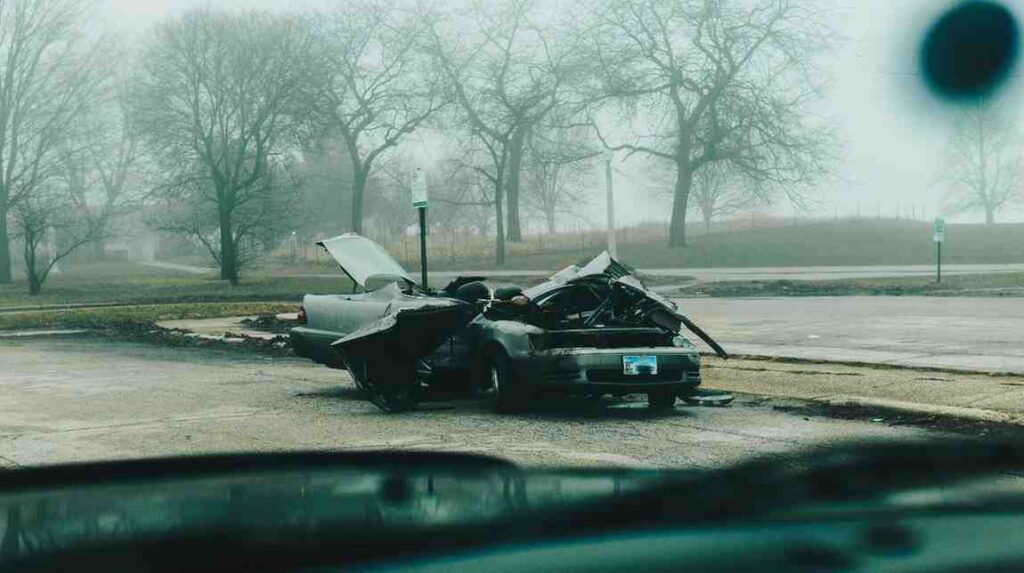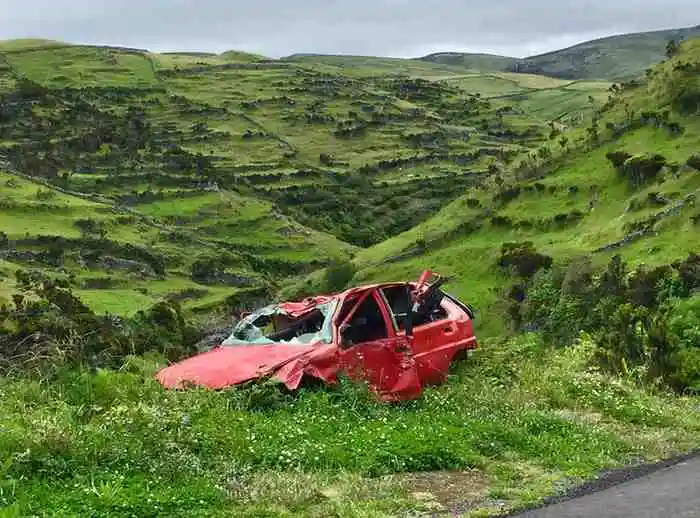Car insurance premiums are rising everywhere, and one of the biggest reasons is nature itself. From floods to wildfires, hurricanes to hailstorms, the frequency and severity of natural disasters have surged in the past decade. These events aren’t just affecting the regions they strike – they’re shaking up the entire insurance market. As someone who’s been studying car insurance trends for years, I’ve seen firsthand how environmental chaos is reshaping the economics of risk. The link between natural disasters and premium hikes is undeniable, and it’s changing how insurers operate and how drivers pay for coverage.

The Rising Cost of Climate-Driven Damage
Let’s start with the big picture. Every time a major disaster hits, insurers face a wave of claims. Cars are flooded, crushed, burned, or destroyed outright. In 2023 alone, global insured losses from weather-related events exceeded $120 billion according to Swiss Re Institute. When insurance companies pay out that much, they have to adjust premiums to stay solvent.
But the challenge goes deeper. Natural disasters don’t just cause direct damage – they disrupt supply chains and inflate repair costs. After a major storm, parts become scarce, labor prices rise, and repair times double. When one hurricane can destroy tens of thousands of vehicles, the financial impact spreads across the entire industry. Even drivers hundreds of miles away end up paying more because insurers must spread the cost of risk.
Why Weather Disasters Affect Everyone, Not Just Victims
A lot of people ask me, “If my car wasn’t affected, why did my rate go up?” The answer lies in how car insurance works. Insurers pool risk across all policyholders. So when disasters hit one region hard, the resulting losses affect the company’s overall financial health. To recover, they often adjust rates nationally or regionally.
For example, if wildfires destroy thousands of cars in California, insurers that operate nationwide may raise premiums for customers in states like Arizona or Texas. This isn’t about unfairness – it’s about sustainability. Insurance companies have to maintain reserves that allow them to pay claims after the next big event. It’s a balancing act between financial stability and customer affordability.
If you’ve noticed your policy costs rising year after year, check out my detailed breakdown of how inflation affects car insurance premiums. Inflation and climate costs often work hand in hand to push rates higher.
Floods, Fires, and Hailstorms: The Costliest Offenders
Among all natural disasters, a few stand out for their destructive impact on vehicles. Flooding is by far the most common cause of total car losses. Once a vehicle’s electrical system is compromised by water, it’s rarely repairable. Even cars that seem fine can develop hidden issues later, leading insurers to declare them total losses upfront.
Wildfires are another growing concern. They don’t just burn cars – they melt plastic, warp metal, and damage air quality sensors. Vehicles exposed to smoke and heat often become unsafe long before flames reach them. Insurers now account for wildfire zones when calculating premiums, especially in states like California and Colorado.
Then there’s hail. It might sound minor, but hail causes billions in annual vehicle damage across the Midwest and South. Even a short hailstorm can leave thousands of cars with cracked windshields, dented panels, and paint damage. Comprehensive insurance covers this, but repeated hail claims drive premiums higher for everyone in high-risk zones.
If you live in a disaster-prone region, it’s smart to understand your coverage limits. My guide on car insurance for older cars can help you decide whether comprehensive coverage still makes financial sense.
How Insurers Are Adapting to the New Normal
Insurance companies aren’t sitting idle. They’re turning to technology, data analytics, and AI to improve their ability to predict and price climate risks. Modern insurers use satellite imagery, geographic information systems (GIS), and predictive modeling to map out exposure zones with precision.
For example, AI can assess which neighborhoods are more likely to experience flooding or storm damage based on past weather patterns, elevation data, and infrastructure conditions. This allows insurers to adjust premiums in specific micro-areas rather than entire states. In theory, that makes pricing fairer, but it also means drivers in vulnerable areas may face steep rate hikes.
At the same time, insurers are increasingly partnering with automakers and weather intelligence firms to develop real-time alerts for policyholders. Imagine receiving a notification warning you to move your car before a hailstorm hits – that’s technology in action.
If you want to understand how technology is already changing insurance beyond weather-related risks, check my article on AI and Big Data in car insurance to see how predictive models and sensor data are reshaping premiums.
The Ripple Effect: Supply Chains, Parts, and Delays
Natural disasters also wreak havoc on auto repair networks. When floods or fires hit a region, local body shops may close temporarily or become overwhelmed with work. Replacement parts – especially electronics and sensors for newer vehicles – often face shipping delays or shortages.
As a result, claim settlements take longer, and rental car costs skyrocket while drivers wait for repairs. Since insurers often cover those rentals, this adds another layer of expense that eventually feeds back into premium calculations.
For electric vehicles, the problem is even more pronounced. Battery damage from flooding or heat exposure can make repair costs unpredictable. For more on how EVs fit into this evolving risk landscape, see my full insurance guide for electric vehicles.
Government and Reinsurance: The Hidden Layers Behind Pricing
You might not realize it, but your insurer also buys insurance – it’s called reinsurance. These are massive global companies that help insurers absorb catastrophic losses. When natural disasters strike repeatedly, reinsurers raise their own prices, which in turn trickle down to regular drivers’ premiums.
In recent years, the cost of reinsurance has climbed dramatically because of back-to-back extreme weather events. Some insurers have even withdrawn from high-risk areas entirely because reinsurance became too expensive. This reduces competition and pushes prices up further for the remaining providers.

According to The Insurance Information Institute, reinsurance rates for catastrophe-exposed regions have risen more than 30% since 2020. That’s a huge burden for insurers to absorb, and it inevitably reaches consumers.
How Drivers Can Protect Themselves Financially
You can’t stop the weather, but you can make smart choices. First, always make sure you have comprehensive coverage – it’s what protects your vehicle against natural disasters like floods, fires, and hail. Second, regularly review your policy limits. Repair costs have climbed, so an outdated policy might leave you short when disaster strikes.
Third, if you live in a high-risk area, park indoors whenever possible and sign up for weather alerts. Some insurers even offer discounts for proactive risk reduction, such as installing flood sensors or subscribing to telematics programs.
Finally, compare rates regularly. Different insurers weigh climate risk differently, so shopping around can make a real difference. You can also explore flexible policy types like one-week car insurance or pay-per-mile plans that adapt to your driving habits and exposure levels.
The Future of Climate-Resilient Insurance
As natural disasters grow more frequent, the entire insurance model is evolving. We’re entering an era of climate-aware underwriting where weather risk is treated as a central factor rather than a rare exception. AI and big data will continue to refine this process, helping insurers better predict losses and personalize premiums.
However, this evolution raises a tough question: can affordability and sustainability coexist? Insurers face mounting claims, and drivers face rising costs. The answer will likely depend on collaboration between the industry, policymakers, and technology providers. Insurers need data; governments need resilience planning; and drivers need transparency.
At the end of the day, climate change isn’t just an environmental issue – it’s an economic one. As weather extremes redefine risk, the car insurance market must evolve to stay fair, stable, and realistic.
If you want to dive deeper into unique policy solutions designed for specific needs, I recommend exploring car insurance for military members or high-risk driver insurance tips. These guides break down how to navigate premium challenges in different circumstances.
Conclusion: Weathering the Storm Together
Natural disasters are no longer rare outliers – they’re part of everyday risk management. And that reality is pushing car insurance premiums upward across the board. The key is to understand what’s driving those increases and take proactive steps to stay protected.
Insurers are adapting with new tools and smarter pricing, but ultimately, the goal remains the same: to keep drivers financially secure when the unexpected happens. As climate risk continues to evolve, the best thing any driver can do is stay informed, stay prepared, and choose policies that reflect today’s realities – not yesterday’s assumptions.
Because in a world where storms, fires, and floods are rewriting the rules, awareness isn’t just power. It’s protection.



